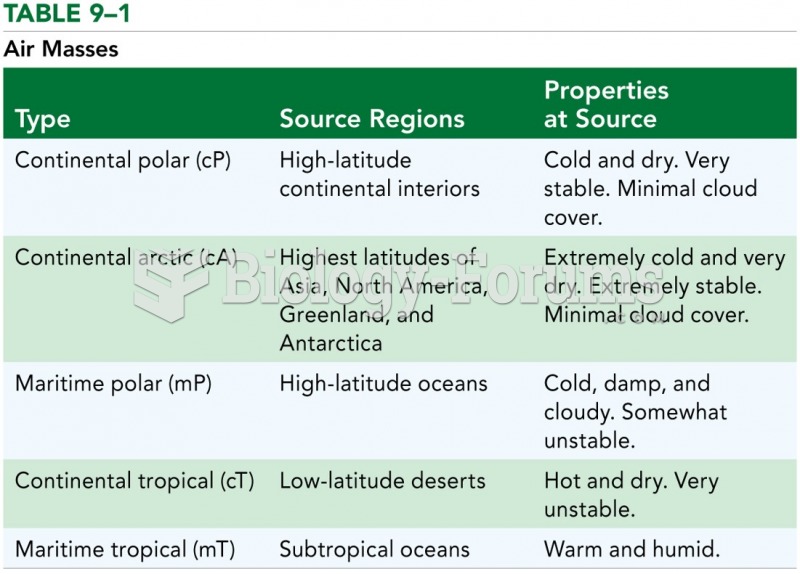|
|
|
Certain chemicals, after ingestion, can be converted by the body into cyanide. Most of these chemicals have been removed from the market, but some old nail polish remover, solvents, and plastics manufacturing solutions can contain these substances.
In the United States, there is a birth every 8 seconds, according to the U.S. Census Bureau's Population Clock.
Atropine, along with scopolamine and hyoscyamine, is found in the Datura stramonium plant, which gives hallucinogenic effects and is also known as locoweed.
After a vasectomy, it takes about 12 ejaculations to clear out sperm that were already beyond the blocked area.
Cancer has been around as long as humankind, but only in the second half of the twentieth century did the number of cancer cases explode.







